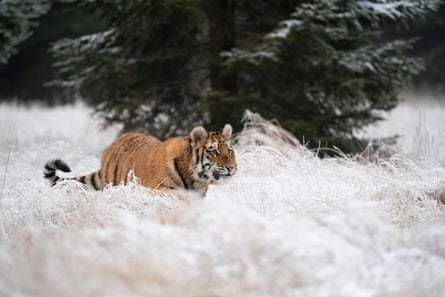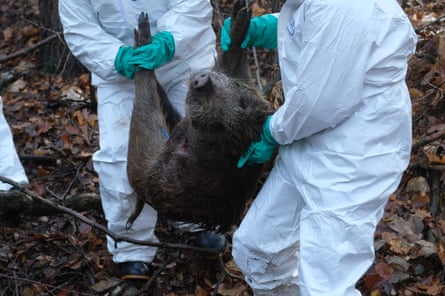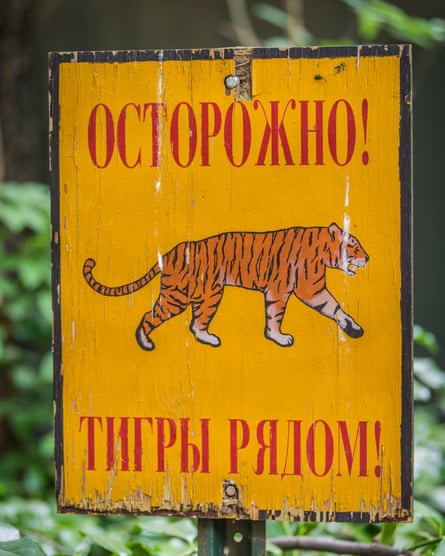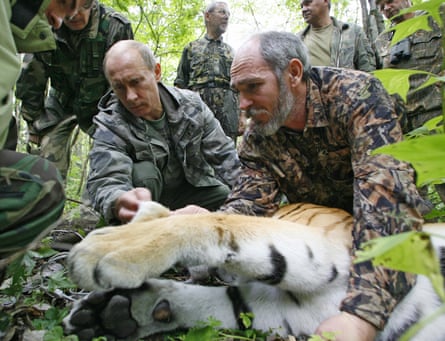The attacks seemed to come from nowhere. At first, the tigers snatched guard dogs on the edge of villages in Russia’s far east, emerging from the forest at night to prey. Others went for livestock, going after horses and cattle.
Then the attacks on people began. In January, an ice fisher was mauled at night and dragged away by a big cat, just weeks after a forester had been killed. In March, another man was attacked and partly eaten by a tiger. It was the deadliest winter for tiger attacks in Siberia for decades.
For years, the Amur tiger, also known as the Siberian tiger, was so rarely seen in Russia’s far east that it was considered a ghost of the forest. The world’s largest big cat, celebrated for its power and resilience, is also one of the most endangered. A few hundred cling on in a remote fragment of the Siberian taiga and a sliver of the Russian-Chinese border, remnants of a historic territory that once spanned the Korean peninsula and north-east China.

Since 2020, however, Amur tigers have left the forest in unprecedented numbers – sparking fear among the communities that live alongside them. African swine fever, a disease that is almost always fatal to most pig species, has swept through the region. The disease has been described by scientists as an ecological disaster, driving a number of wild pig species toward extinction, with enormous knock-on effects for ecosystems and other species. It has killed vast numbers of wild boar, a main food source for the tigers and particularly popular with females with cubs.
The virus probably came over the border from China, where millions of pigs died after an outbreak that began in 2018. Unrestricted poaching of deer and increased logging in the tigers’ ranges have contributed to a perfect storm to push the predators out of their forests in search of food. Some regions have seen a 1,000% increase in human tiger-conflict incidents as African swine fever has spread.
In a typical year, a handful of tiger deaths and captures take place. Yet, between October 2024 and September this year, at least 17 Amur tigers have been killed and 27 captured, of which three later died, according to analysis seen by the Guardian. Of the captured cats, many were found emaciated and dehydrated, or suffering from the effects of gunshot wounds or trauma injuries from a vehicle collision.
“The tigers are hungry. That is why we are seeing these incidents,” says an Amur tiger expert, whom the Guardian has not named to protect their identify. As tiger conservation has become increasingly politicised in Russia, some experts fear speaking publicly on the issue. “People want to highlight this to the government but they do not want to listen,” they say.

There are no figures on the number of wild boar that have died from African swine fever in eastern Russia, although there are frequent reports from people who come across carcasses in the forest during mushroom and nut gathering trips. Dr Matthias Markolf, a researcher at Cologne zoo, is part of a group of international experts working to better understand the global impact of the virus on wild species.
“Pigs die in 90-100% of circumstances. It’s really fatal. In Asia, there are lots of pig species restricted to small islands, so it’s having catastrophic consequences. We have already come across examples in Sumatra and Malaysia where they are having more tiger conflicts,” he says.

Speaking out about the recent human-tiger conflicts in the Russian far east can be dangerous; in 2008, the Russian president, Vladimir Putin, threw his weight behind Amur tiger conservation efforts, pledging to increase numbers of the big cat. Officially, authorities say there are now about 750 in the wild, a significant increase from the 1940s, when numbers were as low as 40. While few trust the accuracy of official numbers, many experts say the push from the Russian leader has helped. But many conservationists also suspect the big cats are in far more trouble than authorities recognise.

The Amur tiger centre, the main body responsible for their conservation, was established by Putin. The board for their conservation is overseen by justice minister Konstantin Chuychenko, who has been sanctioned by western countries over his role in the invasion of Ukraine. Karin Kneissl, former foreign minister for Austria and a close ally of Putin, is an international ambassador on tiger protection. Few independent researchers and conservation groups are allowed to work on the Amur tiger’s protection, experts say.
At a recent event, Sergey Aramilev, the director general of the Amur tiger centre, played down concerns about issues with Amur tigers.
“Human deaths in Amur tiger attacks are extremely rare. From 2010 to 2024, 20 attacks on humans were recorded, resulting in 13 injuries and seven deaths. Of these 20, 18 were provoked by humans,” he said. “Two recent cases in 2025 were consistent with the overall statistics; both tigers had multiple gunshot wounds. Therefore, the claim of unprovoked aggression by a tiger toward a human is far-fetched and exists only in unreliable online publications.”
The Amur tiger centre did not respond to the Guardian’s request for comment.
But some have chosen to raise the issue online, regardless of the risk. In January, residents in one village used social media to complain about the impact of a tigress hunting dogs in their town. Others have pledged to boycott local elections until they get more protection from tigers.
Experts working on the project say more must be done to protect the forests that are home to the tigers, including reducing the impact of logging and mining.

“If we keep the ecosystem, we keep the tigers. African swine fever wouldn’t be such a big problem if the forest was in good condition,” one says.
Find more age of extinction coverage here, and follow the biodiversity reporters Phoebe Weston and Patrick Greenfield in the Guardian app for more nature coverage

 2 hours ago
4
2 hours ago
4

















































